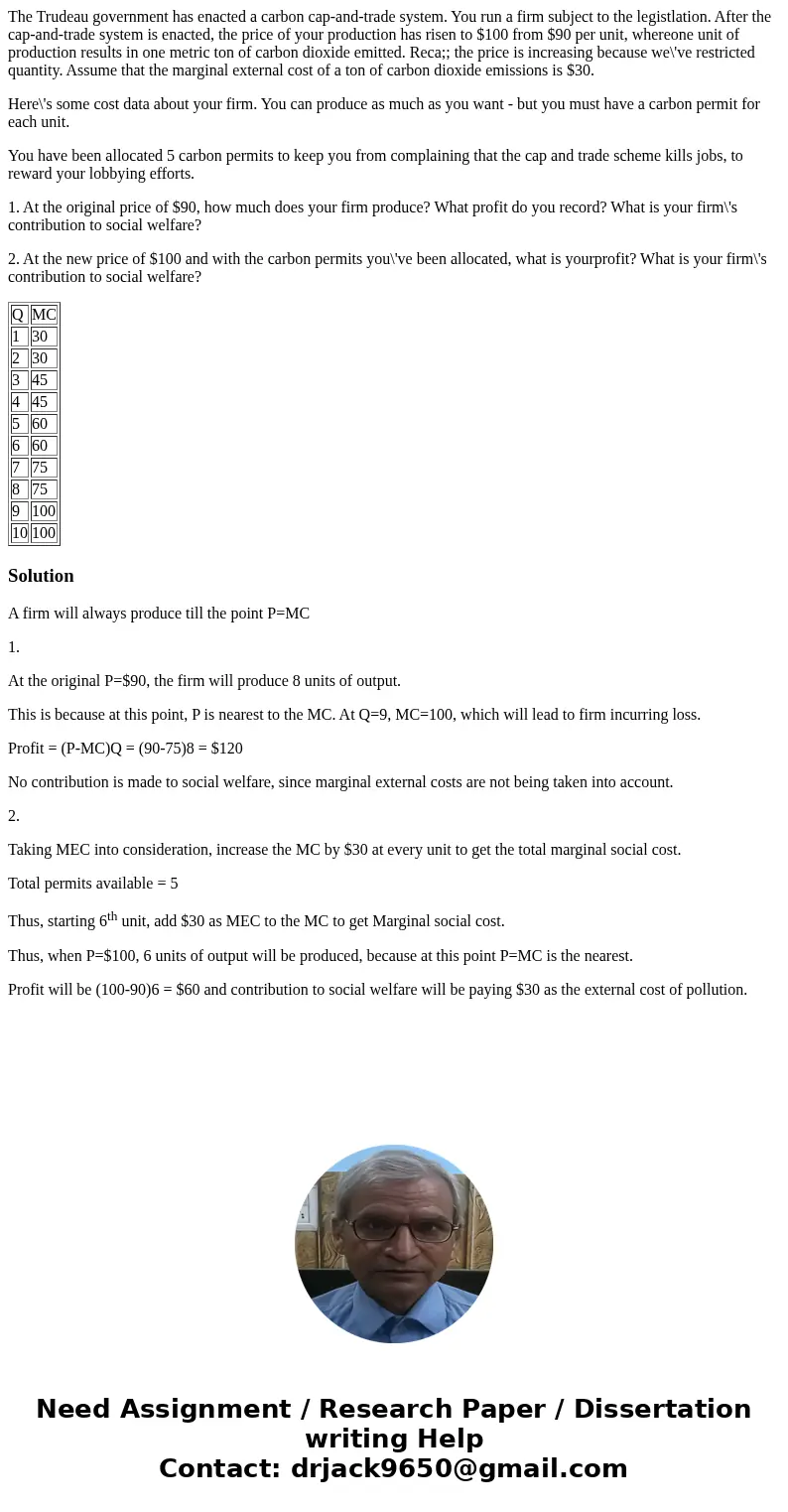The Trudeau government has enacted a carbon capandtrade syst
The Trudeau government has enacted a carbon cap-and-trade system. You run a firm subject to the legistlation. After the cap-and-trade system is enacted, the price of your production has risen to $100 from $90 per unit, whereone unit of production results in one metric ton of carbon dioxide emitted. Reca;; the price is increasing because we\'ve restricted quantity. Assume that the marginal external cost of a ton of carbon dioxide emissions is $30.
Here\'s some cost data about your firm. You can produce as much as you want - but you must have a carbon permit for each unit.
You have been allocated 5 carbon permits to keep you from complaining that the cap and trade scheme kills jobs, to reward your lobbying efforts.
1. At the original price of $90, how much does your firm produce? What profit do you record? What is your firm\'s contribution to social welfare?
2. At the new price of $100 and with the carbon permits you\'ve been allocated, what is yourprofit? What is your firm\'s contribution to social welfare?
| Q | MC |
| 1 | 30 |
| 2 | 30 |
| 3 | 45 |
| 4 | 45 |
| 5 | 60 |
| 6 | 60 |
| 7 | 75 |
| 8 | 75 |
| 9 | 100 |
| 10 | 100 |
Solution
A firm will always produce till the point P=MC
1.
At the original P=$90, the firm will produce 8 units of output.
This is because at this point, P is nearest to the MC. At Q=9, MC=100, which will lead to firm incurring loss.
Profit = (P-MC)Q = (90-75)8 = $120
No contribution is made to social welfare, since marginal external costs are not being taken into account.
2.
Taking MEC into consideration, increase the MC by $30 at every unit to get the total marginal social cost.
Total permits available = 5
Thus, starting 6th unit, add $30 as MEC to the MC to get Marginal social cost.
Thus, when P=$100, 6 units of output will be produced, because at this point P=MC is the nearest.
Profit will be (100-90)6 = $60 and contribution to social welfare will be paying $30 as the external cost of pollution.

 Homework Sourse
Homework Sourse